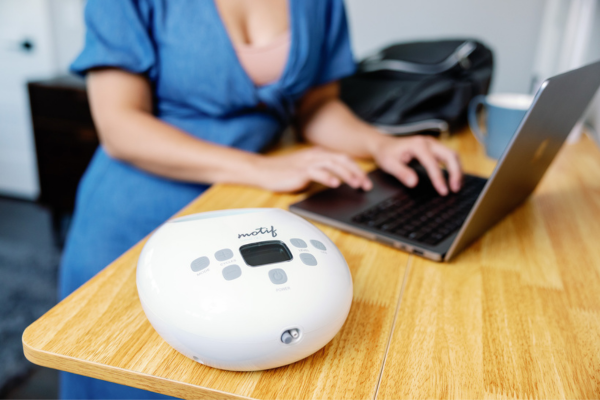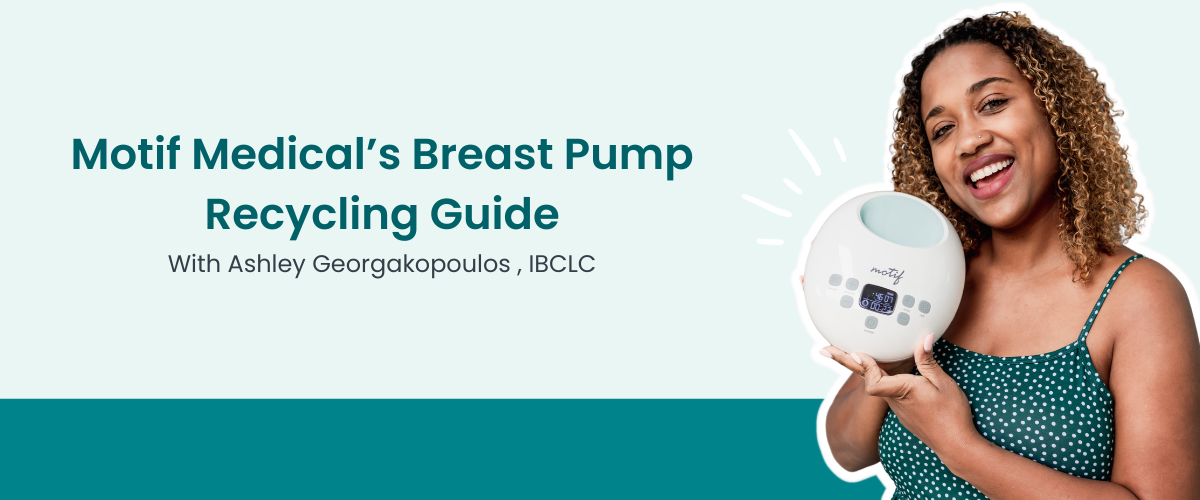Breastfeeding Balance
Here are our top tips for balancing breastfeeding and daycare. From seamless transitions to maintaining your pumping routine, we will help guide you on how much milk you need.
If you currently are breastfeeding exclusively, transitioning to bottle feeding part-time can seem intimidating or worrisome. Use the time leading up to daycare to incorporate allowing your baby to learn how to drink from the bottle. Get to know your breast pump to develop your technique and slowly start a milk stash.
If you are already practicing bottle feeding or needing to supplement with donor milk or formula, the main goal to focus on while on maternity leave is building or maintaining your milk supply with a solid pumping technique. Additionally, your goals and routine need to be communicated to the caregiver(s) to support you where you are- and not add additional pressures or undervalue your efforts!
Introducing the Bottle
When possible, waiting until at least breastfeeding is established and the baby has returned to birth weight prior to introducing a bottle is recommended. Certain circumstances may call for bottle use sooner. If you have been exclusively feeding at the breast, think about introducing it around four weeks of age. Do not wait too long after this period if you know you need to incorporate bottle feeding at some point in the journey. This 4-week gestational age is a helpful time frame as they are more apt to accept additional feeding methods. However, waiting too long may make it harder for them to accept the bottle.


Utilize Your Partner or a Friends Help
Having someone else introduce the bottle may make it easier for the baby to accept it. They associate the breast with the mother, both in smell and familiarity. Encourage a different hold, slightly more upright. You can even use an infant seat or carrier to completely separate the experience from feeding at your breast until they get used to it. Leaving the room may help, too, so as not to be distracted by the smell of the mother.
Slow and Steady
Slow-paced feeding out of a number 1 flow nipple, in a more upright position, will keep the flow rate similar to breastfeeding. This is for babies not currently monitored for weight loss or plateaued weight gain. Technique in bottle feeding that mimics what a breastfeeding baby is used to will help avoid flow rate confusion and frustration, what once was thought to be more of a nipple confusion problem.
Pumping Technique and Scheduling
This technique and structure will be carried over into your routine at work to protect your milk supply. A technique refers to the steps you take to not only prep the pump with assembly, but also prepare your body to respond effectively, sufficiently, and efficiently. In many cases, mothers respond differently or need more stimulation to respond with milk output than compared to when feeding directly from the breast. So your technique may be getting in the right headspace first, focusing on a picture of your baby, smelling their blanket, or watching a video of them, while another may need to actually massage their breasts and stimulate their nipples manually before attaching the pump. The technique will also refer to how long you need to utilize massage mode on the pump before switching to expression, what levels of strength work best, and how long the duration should be.
The pumping sessions will also need to take place while your baby is at daycare, such as if you’re at work. So while you may want to start with a light milk stash before returning to work, realize that you also contribute to the stash while at work, which supplies them their milk, obviously, but also protects your milk supply by not going long periods without any milk removal. It also protects the breast tissue, lowering risks of clogged milk ducts and mastitis. These sessions need to be as frequent as the average baby would feed, which is every 2-3 hours, not surpassing 4 hours in between sessions. Discussing breaks and pumping while working with your employer will help to establish your schedule, and allow you to meet your supply goals, protect your health, and also establish a work environment conducive to supporting mothers in the workplace!
Time Suggestions
Typically, the average session is 15-20 minutes from setup to completion. Hands-on pumping, or massaging and compressing while pumping, can make this a more efficient process. Nailing down your technique for stimulation, expression, and satisfactory relief will increase your chances of sticking with your goals and provide milk to your stash.
Tip: Store your milk, flanges, and milk collection bottles in a cooler or refrigerator for in-between uses, and wash your accessories once you are home! This saves time from washing each time and is typically cleaner at home anyway
While using massage mode for letdown stimulation or the milk ejection response (MER), aim for at least 2-3 minutes on this mode, while taking calming breaths and setting your mind to visualizing milk flow. If you feel your letdown, you can switch to expression mode, with strength settings set to your comfort level, maximizing your output and taking advantage of that faster ejection. This will eventually calm to a more steady flow, and you can complete the session once the flow has stopped or is barely dripping.
How Much Do You Need?
Despite what we may see on social media and mom group chats, we don’t need freezers packed with stashed milk. Much of that will end up not being used or donated. A breastfed baby typically takes in 24-36 oz a day, depending on the age. Formula amounts will look different from this amount. You can read more on that here. Communicate these amounts directly with the care provider to avoid them overfeeding, as most are used to formula amounts.
Essentially, you will pump for the next day, or event the day after, and have a buffer stashed to get you started. The reason is that it is not achievable for many to go beyond that, because the body is used to feeding the baby, and is adjusted to their daily intake, with little fluctuation. You will also need to continue pumping, regardless of the stash, to avoid health complications from going long periods in between pumping. Pump to replace the feeding you weren’t there in person for, and give yourself grace from unnecessary pressure beyond that!
Pumping Example
To calculate how much milk to try to pump, total up the amount of hours you will be away from the baby, including commute time. The ratio for the number of ounces is 1-1.5 per hour. Variables for the calculation would be knowing how much your baby feeds, and how well you respond to your pump.
For example, working from 8:00-4:30, with a 30-minute commute from home to daycare, to work would be around 9 1/2 hours. Once you calculate your time, let's compare how many ounces to pump for that day, including a session you can include before and/or after work.
9.5 hours separated = 9.5 to 14.5 ounces needed, the medium being 11.5 ounces.
A good pumping session to provide an entire feeding on average would be around 2.5-3 ounces.
This would be around 4 pumping sessions a day. Not bad!
Utilize your body’s natural higher volume of milk first thing in the morning for your first pumping session, feed your baby directly before leaving for the day, and have your 3 sessions at work planned out. You can also pump in the car with a hands-free pump to maximize your pumping yield for the day and multitask in the best way!
Tools to Make Pumping at Work Easier
Information provided in blogs should not be used as a substitute for medical care or consultation.










